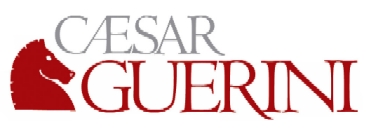Patterning A Shotgun 2016
It is well-known and a settled matter that most folks do not pattern their shotguns. It has always been that way, primarily because it is not fabulously fun, exciting, much less thrilling. Instead, we like to attempt to “read breaks,” compare scores, and sometimes ponder the “even-ness” of patterns . . . all of which are meaningless and a waste of time. Unfortunately, when one variable changes, everything changes, so unless we are all using the exact same gun, the exactly same shell, the exact same choke, and shoot under the same ambient conditions inclusive of elevation and temperature, one person's results hardly means another person's results are relevant. It hardly invalidates patterning, for shotshell patterns are the only interaction between ourselves and our targets, but it is something we have to do for ourselves, with our own specific equipment.
The first step is ensuring our shotguns shoot to point of aim. Many do not, about one third of all shotguns I test do not. That naturally has to be rectified before bothering with anything else. The first shot out of a Benelli Vinci, with a Trulock modified Precision Hunter choke and 1 oz. Federal Top Gun (3.5 % antimony shot) 1180 fps 3 ft. instrumental velocity, at a laser-verified 40 yards produced a 58.5 % pattern percentage. The center of the pattern printed 1.02 inches low, and 1.78 inches to the left. It is roughly a 58.5% pattern percentage.
The very next shot produced a 68% pattern percentage, the center of the pattern .4 inches to the left of the bull. The average pattern percentage for three shots was 56%. Although the resolution of the data is better with a 5 shot average, better yet with 10 shots, three shots is the bare minimum that produces useful data. Is that 56% a good pattern?
Well, it all depends on who you want to believe. It is a weak pattern, according to Stan Baker, a bit better than Winchester suggested, yet in line with what Jack O'Connor suggested (55-65%) as a “Modified” pattern.
|
Standard American* |
Constriction (12 gauge) |
Pattern percentage |
|
Cylinder |
.000 in |
40% |
|
Skeet |
.005 in |
53% |
|
Improved Cylinder |
.010 in |
57% |
|
Modified |
.020 in |
67% |
|
Improved Modified |
.030 in |
73% |
|
Full choke |
.040 in |
75% |
|
Winchester |
||
|
Cylinder |
.000 in |
25 - 35% |
|
Skeet #1 |
- |
33% |
|
Improved Cylinder |
.005 in |
35 - 45% |
|
Skeet #2 |
.007 in |
50% |
|
Modified |
.012 in |
45 - 55% |
|
Improved Modified |
.022 in |
55 - 65% |
|
Full choke |
.036 in |
65 - 75% |
|
Jack O' Connor** |
||
|
Cylinder |
- |
35 - 40% |
|
Skeet #1 |
- |
35 - 40% |
|
Improved Cylinder |
- |
45 - 50% |
|
1/4 choke / Sk. #2 |
- |
50 - 55% |
|
Modified |
- |
55 - 65% |
|
Improved Modified |
- |
65 - 70% |
|
Full choke |
- |
70 - 80% |
* from
Stan Baker Co.
** from The Shotgun
Book
The 10% shot to shot pattern percentage variation from the 1 oz. Federal Top Guns is not only typical, it is better than average and better than most economy-level loads. No forcing cone and no bore diameter can improve these figures: the only path to more consistent patterns is a better shell, with more consistent primers, more consistent propellants, with higher antimony shot and more spherical pellets. Or, in the case of hunting loads, all of those factors and the addition of buffering. If you want high efficiency, consistent patterns, it takes both a high quality choke and a high quality shell to produce them. George Trulock and his family spend countless hours manufacturing the best choke tubes in the industry, but not even George Trulock can produce a choke tube that can take a truly junky shell with gravel-quality soft shot and extract the superbly high efficiency patterns from it.
The question arises whether lighter payloads (1 oz.) pattern more efficiently than 1-1/8 oz. loads. The best available version of the truth is yes, but not by much, perhaps 2% or so. See the Neil Winston chart above. The math does not work well, for a 1-1/8 oz. payload gives us 12.5 % more pellets every time, and the 1 oz. load is invariably at least a 10% weaker pattern. 7/8 oz. loads offer up to 4.5 % better pattern efficiencies, but again, it does not come close to compensating for payload, for even a 1 oz. load has 14.2 % more pellets every time.
I understand the vulgar display of poverty as well as anyone, and any gun that has uncomfortable levels of recoil is no fun for anyone and makes no one a better shooter. However, the best available version of the truth is that if you want the most effective patterns on clay, paper, or game, it takes the best shell, the best choke tube, and as much payload as you can comfortably handle.
Copyright 2016 by Randy Wakeman. All Rights Reserved.












